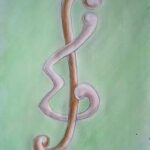
A graph
We prove that for all
We deal with
A connected graph
We characterize
We establish some basic facts about sign-patterns of orthogonal matrices, and use these facts to characterize the sign-nonsingular matrices which are sign-patterns of orthogonal matrices.
In this paper, we give some properties of balanced labeling, prove that the graph
In this note, we verify two conjectures of Catlin in [J.Graph Theory
Let
Let
where
What is the 2-packing number of the
A Pandiagonal magic square (PMS) of order
In this paper, we consider total clique covers and uniform intersection numbers on multifamilies. We determine the uniform intersection numbers of graphs in terms of total clique covers. From this result and some properties of intersection graphs on multifamilies, we determine the uniform intersection numbers of some families of graphs. We also deal with the
An oriented triple system of order
Let
Let
and
A cycle
If
In 1992, Mahmoodian and Soltankhah conjectured that, for all
We prove two new characterization theorems for finite Moufang polygons, one purely combinatorial, another group-theoretical. Both follow from a result of Andries Brouwer on the connectedness of the geometry opposite a flag in a finite generalized polygon.
Cyclonomial coefficients are defined as a generalization of binomial coefficients. It is proved that each natural number can be expressed, in a unique way, as the sum of cyclonomial coefficients, satisfying certain conditions. This cyclonomial number system generalizes the well-known binomial number system. It appears that this system is the appropriate number system to index the words of the lexicographically ordered code
We investigate the connections between families of graphs closed under (induced) subgraphs and their forbidden (induced) subgraph characterizations. In particular, we discuss going from a forbidden subgraph characterization of a family
A family of double circulant quasi-cyclic codes is constructed from the incidence matrices of difference sets associated with hyperplanes in projective space. A subset of these codes leads to a class of doubly-even self-orthogonal codes, and two classes of self-dual codes.
All nonisomorphic
Let
The following problem, known as the Strong Coloring Problem for the group
We deal with the concept of packings in graphs, which may be regarded as a generalization of the theory of graph design. In particular, we construct a vertex- and edge-disjoint packing of
A homomorphism from a graph to another graph is an edge preserving vertex mapping. A homomorphism naturally induces an edge mapping of the two graphs. If, for each edge in the image graph, its preimages have
Let
The purpose of this paper is to extend the well-known concepts of additive permutations and bases of additive permutations to the case when repeated elements are permitted; that means that the basis (an ordered set) can become an ordered multiset. Certain special cases are studied in detail and all bases with repeated elements up to cardinality six are enumerated, together with their additive permutations.
We show how lattice paths and the reflection principle can be used to give easy proofs of unimodality results. In particular, we give a “one-line” combinatorial proof of the unimodality of the binomial coefficients. Other examples include products of binomial coefficients, polynomials related to the Legendre polynomials, and a result connected to a conjecture of Simion.
The search for homometric structures, i.e., non-congruent structures sharing the same autocorrelation function, is shown to be of a combinatorial nature and can be studied using purely algebraic techniques. Several results on the existence of certain homometric structures which contradict a theorem by S. Piccard are proved based on a polynomial representation model and the factorization of polynomials over the rationals. Combinatorial arguments show that certain factorizations do not lead to counterexamples to S. Piccard’s theorem.
Let
The vertex set of a halved cube
Geometrical representations of certain classical number tables modulo a given prime power (binomials, Gaussian
These experimental observations are made precise by interpreting the recursively defined number tables as the output of certain cellular automata
Special issue: Proceedings of International Conference on Discrete Mathematics (ICDM 2025)
1970-2025 CP (Manitoba, Canada) unless otherwise stated.